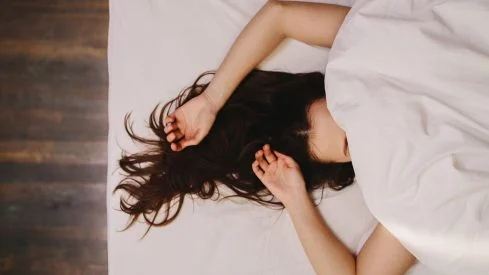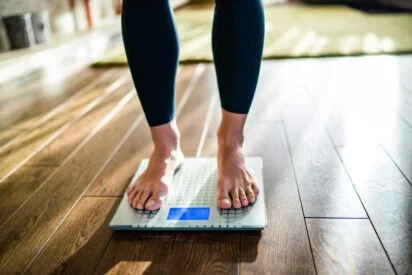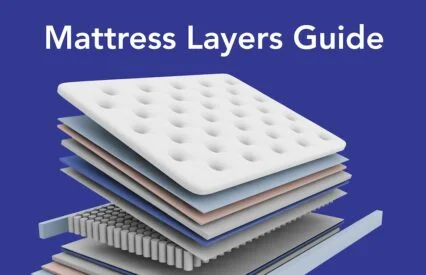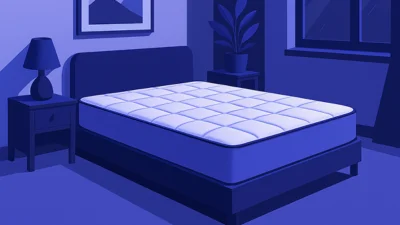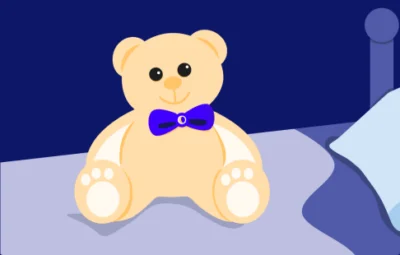Down and feather pillows are a dream come true for sleepers who crave a luxurious sleeping experience. They offer superior comfort, insulation, and breathability, which is what makes them some of the most popular choices for sleepers worldwide. Sleeping on a down pillow makes you feel like you’re on cloud nine — that is, unless you let your down get downright dirty.
Everyone knows the importance of regularly washing and changing their bed sheets, yet many people sleep on keeping their pillows clean too. Sure, washing down pillows or feather pillows may seem daunting, but it’s not as involved as you’d think. All you need is a little know-how.
That’s where your pals at Sleepopolis come in. We put together this safe and effective guide on how to wash and dry your down and feather pillows so that they stay fresh, fluffy, and functional for years to come. So, wake up and let’s get washing!
What Are Down and Feather Pillows, Exactly?
Most people are down with down and feather pillows, but what exactly are they and what makes them so special?
Down and feathers come from ducks and geese: Down refers to the soft, fluffy underlayer, whereas feathers are the tougher outer layer you see when you look at a duck or goose. Because ducks and geese need to be light enough to fly and warm enough to survive in cold weather, these feathers are naturally light and insulating.
You can buy 100-percent down pillows or feather pillows, but many manufacturers mix down and feathers to get the best of both worlds. Down provides that cushy, comfy feeling most sleepers yearn for, while feathers give the pillow a little structure and shape.
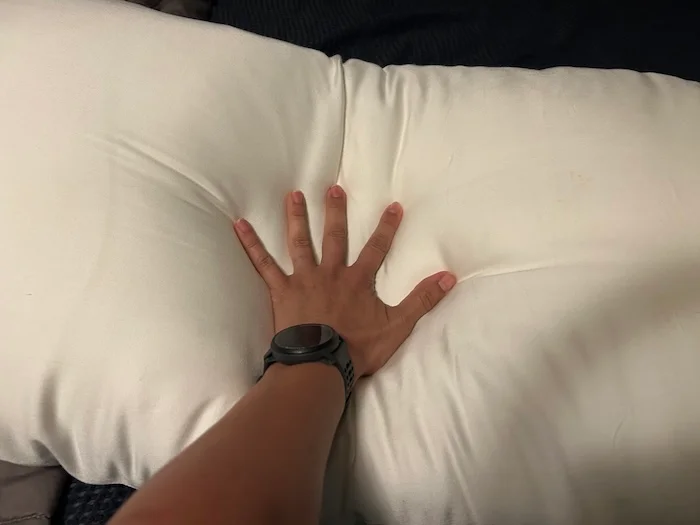
Down-alternative pillows have become increasingly popular over the years as well. These pillows use synthetic fibers like polyester to mimic the feel of down. They’re generally easier to wash, but they tend to lack the same natural loft and breathability you get from authentic down.
Not sure if a down and feather pillow is right for you? No worries; check out the pros and cons of down pillows and feather pillows below or check out our guide on how to choose the right pillow.
How to Wash Feather Pillows and Down Pillows
Down and feather pillows are soft, delicate, premium, and luxurious, so great care is required if we’re going to preserve those naturally decadent features and enjoy some longevity from your pillow.
Never fear; Sleepopolis is here to give you the step-by-step breakdown of how to clean your pillow safely and effectively.
Step One: Check the Label
Many manufacturers print instructions for how to properly care for your pillows right on the tag, so you can easily determine if you must hand wash the pillow or if machine washing is in bounds. Thankfully, most down and feather pillows are machine washable, meaning clean pillows are only a few short washing and drying cycles away.
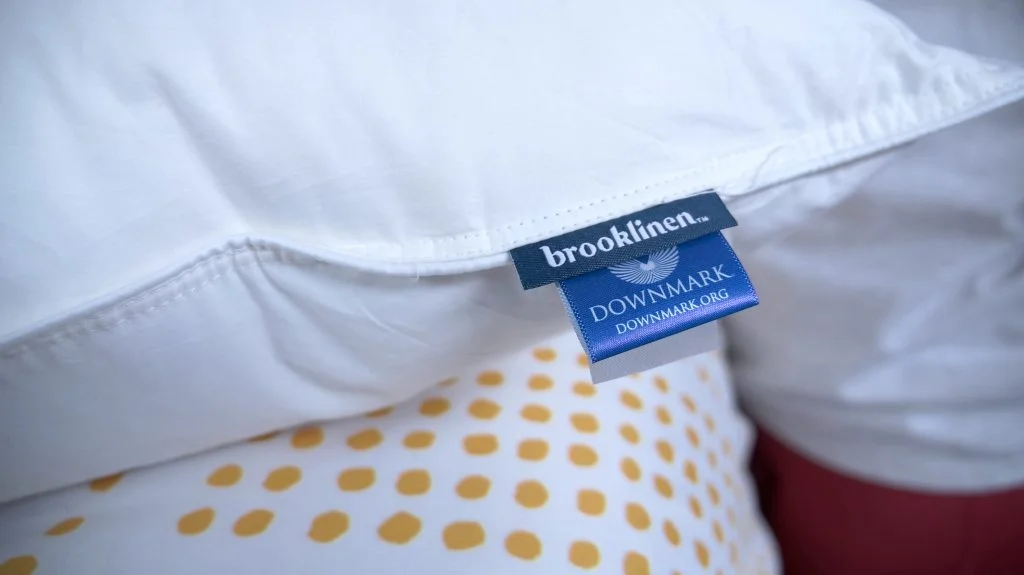
No tag? No problem. Skip to the next step.
Step Two: Remove the Pillow Cover
Some down and feather pillows feature a zippered pillow cover that can be removed. They make the cover removable so you customize your sleeping experience by adding or removing fluffing, but it also makes cleaning much easier.
If your pillow has a zippered cover, unzip it and remove the pillow from the cover now.

Step Three: Let’s Get Washing!
Enough with the prep talk. It’s time to get down to business.
Place your down and feather pillow in the washer, select the gentle cycle, and wash it using cold water. Some manufacturers may say that warm water is fine, but hot water is a big no-no and may damage the pillow.
Use a low-sudsing or mild detergent to ensure your pillow gets squeaky clean while minimizing the chance of having soap residue sticking around. Choosing to run an extra rinse cycle may be prudent as well since that excess water works to wash away residual laundry detergent and soap buildup.
We also recommend using a front-loading washer, if possible, because top-loading washers may not fully soak the pillow and tend to be rougher on the materials, especially if they have an agitator. You may consider schlepping your sleeping stuff to the local laundromat if you don’t have a front-loading washing machine at home.
How to Dry Them Properly
Washing your down and feather pillow is important, but failing to dry your pillow properly risks you winding up with clumpy, funky-smelling pillows that make your sleeping experience uncomfortable, unsanitary, and potentially unsafe.
Here are are our quick tips for making sure you get that pillow dried and bedtime-ready again:
- Use low heat: High heat can damage the feathers and cause shrinkage, so you’ll want to use a drying cycle with a low heat setting. Low and slow is the way to go.
- Use dryer balls: Dryer balls help break up clumps and restore the pillow’s loft while it tumbles around in the dryer. They’re a bit of a specialty item that not everyone has on hand, so feel free to use clean tennis balls as a substitute.
- Give it time: Your down and feather pillow may need two or three cycles to fully get there. Be patient, give yourself ample time to get the job done right, and check your pillows for dampness between each cycle.
- Fluff between drying cycles: Give your duck and goose down pillows a good shake between cycles. This will redistribute the pillow filling and encourage even drying.
Why You Should Wash Them
We completely understand if you’re nervous to wash your down and feather pillow, especially given that some of the best down pillows may be on the pricier side, but washing your pillows is very important for the same reasons it’s important to wash your bedding.
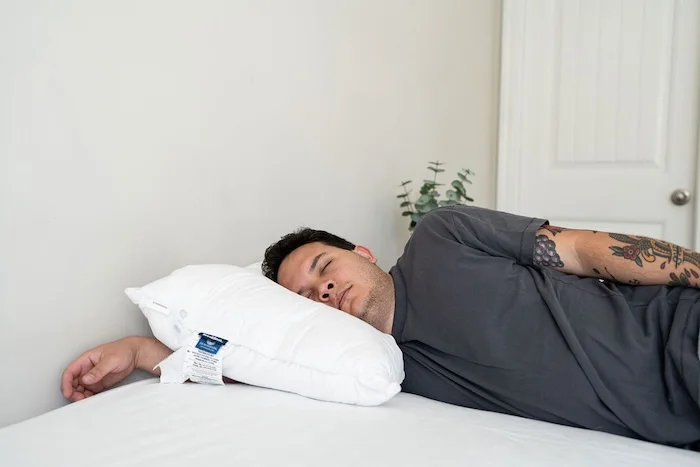
Think about it: You lay your head down on that pillow night after night all year long. Unless you’re using pillow protectors, yucky stuff like sweat, body oils, dead skin, drool, and even dust mites find their way onto your pillowcase and eventually onto the pillow.
A good wash eliminates this stuff and makes them like new, both extending your pillow’s lifespan and supporting better quality sleep.
How Often Should You Wash Them?
Thankfully, you don’t have to set aside time to clean your pillow every week with your regular batch of laundry. Washing your down and feather pillows every 4 to 6 months is often more than enough to keep them pristine and ready for your dreams.
However, you may need to clean them sooner if they start smelling musty, begin feeling flat or heavy, or wind up with visible stains or discoloration.
What Not to Do When Washing Down and Feather Pillows
Knowing how to clean your pillows is important, but sometimes it’s just as important to know what you’re not supposed to do so you can avoid some common pitfalls. Here are a few quick no-nos to ensure you don’t make a dire mistake while washing your down and feather pillows:
- No bleach or fabric softeners: Down and feathers come from ducks and contain natural oils to give them their unique properties. Using bleach and/or fabric softeners can break down the natural oils in the feathers and diminish their quality.
- Don’t wring or twist the pillows: This can damage the fill and the pillow shell. A gentle fluff is sufficient to encourage even drying and promote loftiness.
- No high heat: It can scorch the feathers and ruin the pillow. Remember our sage advice above — low and slow is the way to go.
Washing your down and feather pillows seems scary at first, but follow our steps and you’ll be well on your way to the luxurious sleeping experience you dream of.
FAQs
Can you dry down pillows on high heat?
Absolutely not. High heat can damage the pillow irreparably, so — say it with me one more time — low and slow is the way to go. Air-drying is also an option, although you’ll need to set aside more drying time if you’re using this method.
Will washing ruin the fluff?
Washing your pillow should not ruin the fluffiness or feather filling. Residual soap left behind after the rinse or failing to fully dry your pillow, on the other hand, may ruin the fluff. So, it’s important to make sure you completely rinse out all the soap and fully dry your pillow.
If done properly, washing may actually improve the fluff and result in a loftier, comfier pillow.
What if they smell after washing?
A funky odor after you wash your pillow is a telltale sign that it didn’t get fully dry and may indicate the presence of mildew. The best way to remedy this is to run another gentle cycle with a touch of detergent and run two or three cycles in the dryer right afterwards using our pro tips above.
With a little time and care, you can wash that pillow like a pro and enjoy a premium sleeping experience pronto.







